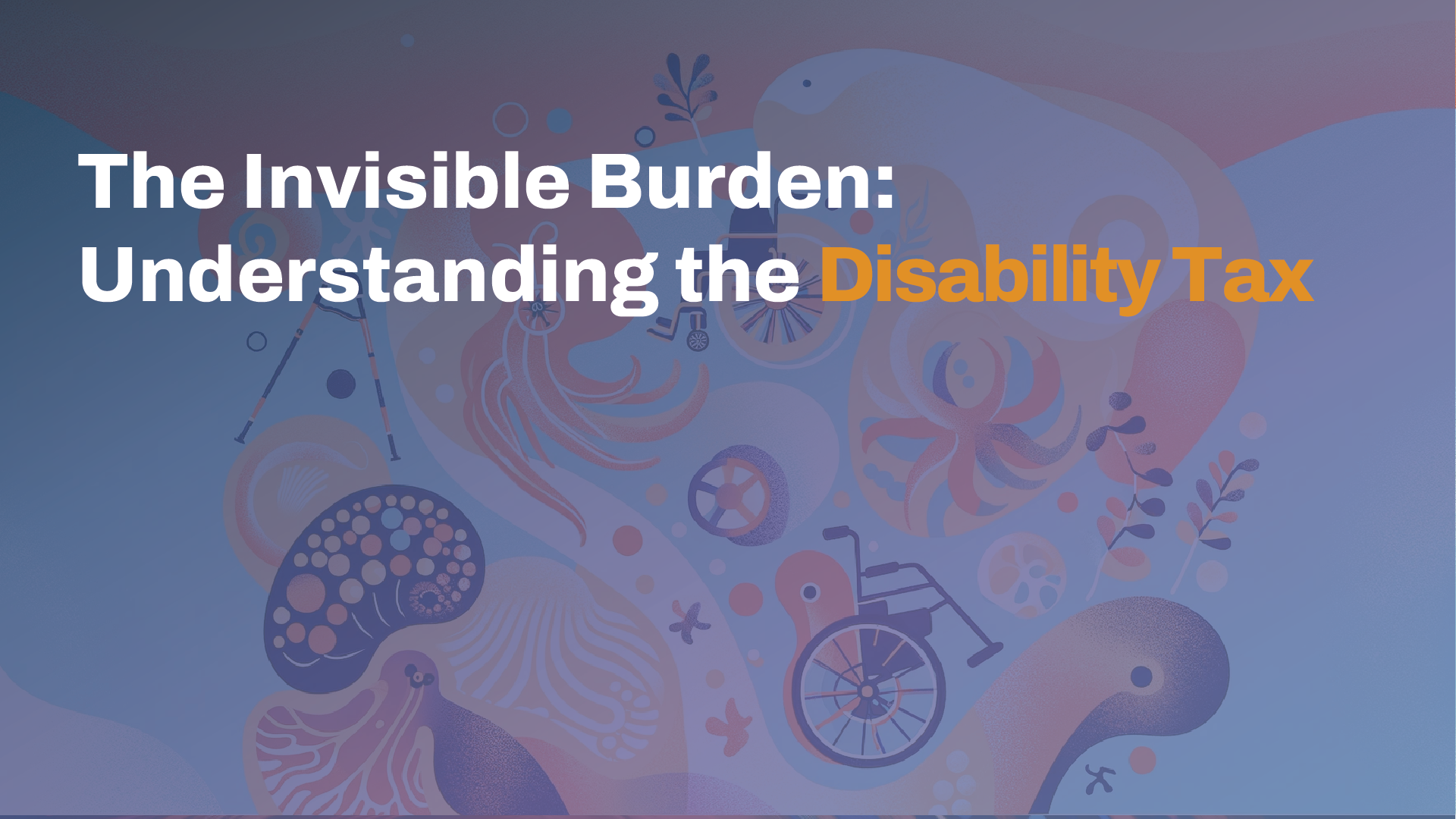What is the ‘Disability Tax’
In our society, people with disabilities face an unseen hurdle that we’ll refer to as the “disability tax.” This term encapsulates the extra costs—monetary, emotional, and time-related—that are requisite for those living with a disability to simply access and engage fully within their day-to-day lives. These expenses can significantly impact individuals and families, affecting their financial freedom, social interactions, and even the way they get to use their time.
But what exactly does this “tax” entail, and how does it shape the lives of those who pay it daily?
The Visible & Invisible Cost of Living with a Disability
Not every disability is apparent. Therefore, the impacts of living with any disability (visible or invisible) and the need for accommodations are not always evident within society.
Consider a successful professional who incurred a spinal cord injury in a car accident. They can no longer use a standard keyboard & mouse to keep up with the demands of their digital-first job while also learning to navigate their home and office in their new wheelchair. They now require specialized software and adaptive hardware to use their computer effectively and efficiently. Not only must they spend the time to research and find the right tools, but they also must invest energy and time into learning to simply be able to do their job at the same level as they could prior to their injury. In addition, their salary didn’t change, but their medical bills and appointments for ongoing therapies were added as additional expenses. Similar accommodations may also support someone with chronic pain flare-ups, arthritis, or even a temporary broken arm injury.
Remember buying your first vehicle? The financial impact of this expense is significant, especially if you are a new college graduate who is simultaneously securing your first job out of school to kick off your professional career. However, imagine you also have a mobility disability and you need adaptive equipment to outfit an already expensive vehicle purchase to simply be able to drive to and from work independently. Not to mention the additional training to learn adaptive driving tools and maintenance.
These stories embody only a few of the tangible and intangible expenses. While some costs are apparent, like medical bills and adaptive equipment, others—such as the emotional toll of the extra stress or the exhaustive time spent on daily tasks—are less visible but equally (and maybe more) impactful.
The Financial Impact of Disabilities
According to a report from the National Disability Institute in Oct 2020, “Households containing an adult with a disability are estimated to require, on average, 28 percent more income (or an additional $17,690 a year for a household at the median income level) to obtain the same standard of living as a comparable household without a member with a disability.” Compounding this number, many of the commonly thought of additional expenses (healthcare, mobility aids, assistive technology (AT), caregiver support, prescriptions, etc.) are not always guaranteed to be covered by insurance.
Beyond Financial Costs
The disability tax goes beyond financial implications. The emotional and social tolls—such as unexpectedly not being able to access community activities/events when you arrive, the stress of needing to count on others for a self-care task that many take for granted, or managing extra planning to make sure accommodations and details are in order before engaging in day to days tasks.
I just finished reading one of the best memoirs I’ve read to date to get an intimate glimpse into the lived experiences of living with a mobility disability. Sipping Dom Pérignon Through a Straw: Reimagining Success as a Disabled Achiever. Eddie Ndopu, born with spinal muscular atrophy, takes readers through humorous yet infuriating stories of his journey to self-fund. He relentlessly advocates for himself to maintain his scholarship and master’s studies at Oxford. Tackling Oxford’s rigorous academic demands is a formidable challenge on its own; factor in the overwhelming additional costs, time, and energy required by his disability, and Ndopu’s story becomes not just enlightening, but profoundly insightful on the amount of work we have to do in order to build a more inclusive world.
Addressing the Disability Tax: The Role of Innovation in Enhancing Accessibility
The disability tax is a complex issue, one that requires the collective effort of society, policymakers, and innovators to address. By understanding the multifaceted nature of this “tax,” we can begin to advocate for changes that will lessen the burden on individuals with disabilities.
This is why our team at Cephable is working hard to dismantle the disability tax in assistive technology. AT innovations can greatly affect the lives of people with disabilities by improving accessibility and independence. However, a significant barrier remains- the cost. This is where we want to make a difference. By shifting the financial burden away from individuals, while working closely with enterprises and companies with inclusive goals to integrate our controls. This ultimately makes their products/services/devices more accessible and helps them reach and support more individuals with disabilities. Cephable is challenging the status quo and highlighting that, historically, “the wrong people have been paying for AT.” Technology holds immense potential to alleviate aspects of the disability tax, however, we still have a long way to go!
Let’s work together to ensure the future is more accessible and equitable for everyone. The journey toward reducing the disability tax starts with awareness and is propelled forward by innovation and advocacy.
Subscribe to Our Newsletter
Subscribe to our InkSights newsletter for updates, the latest innovations in AT, community announcements, and more!

